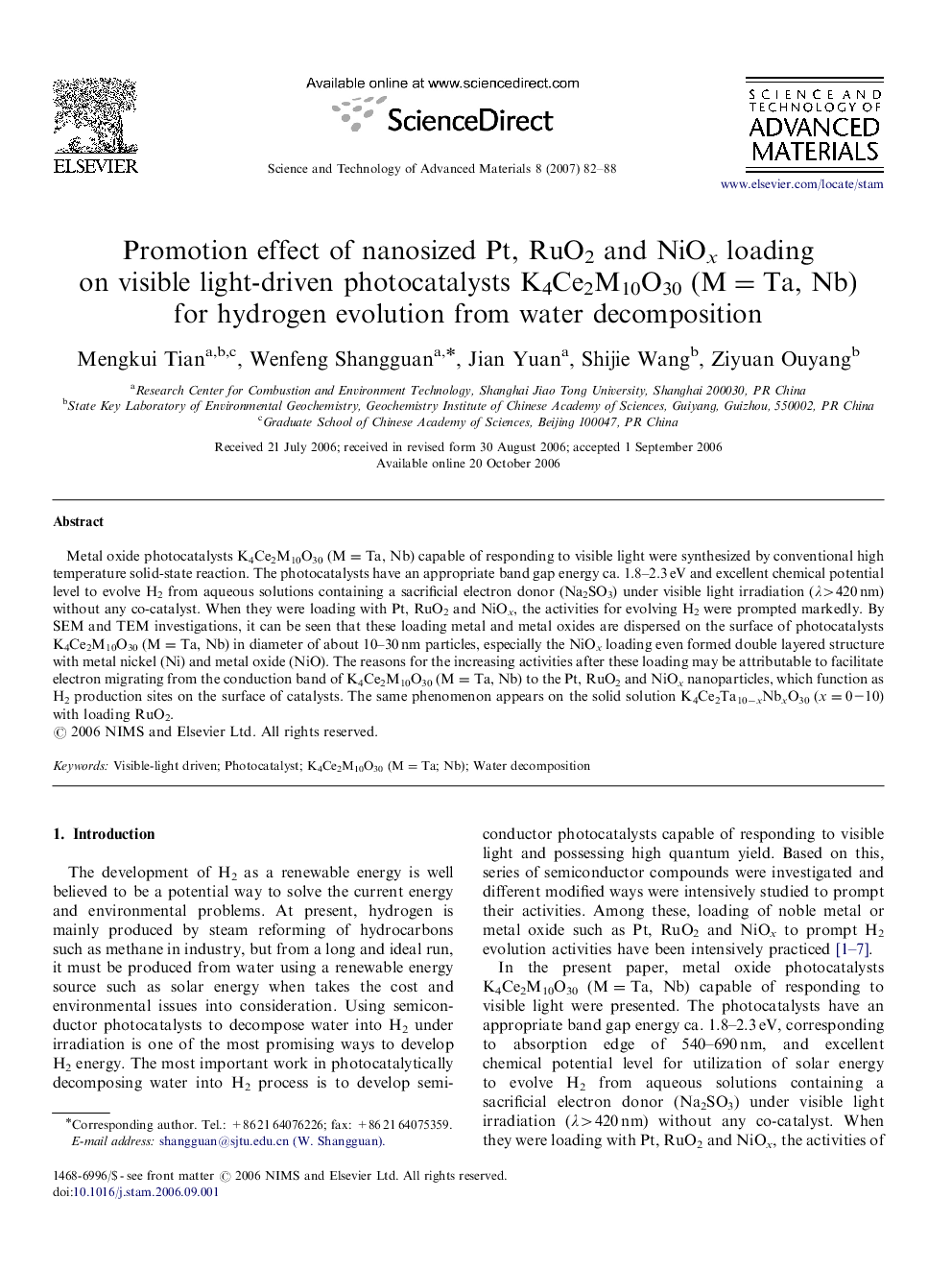| Article ID | Journal | Published Year | Pages | File Type |
|---|---|---|---|---|
| 1590872 | Science and Technology of Advanced Materials | 2007 | 7 Pages |
Abstract
Metal oxide photocatalysts K4Ce2M10O30 (M=Ta, Nb) capable of responding to visible light were synthesized by conventional high temperature solid-state reaction. The photocatalysts have an appropriate band gap energy ca. 1.8-2.3 eV and excellent chemical potential level to evolve H2 from aqueous solutions containing a sacrificial electron donor (Na2SO3) under visible light irradiation (λ>420nm) without any co-catalyst. When they were loading with Pt, RuO2 and NiOx, the activities for evolving H2 were prompted markedly. By SEM and TEM investigations, it can be seen that these loading metal and metal oxides are dispersed on the surface of photocatalysts K4Ce2M10O30 (M=Ta, Nb) in diameter of about 10-30 nm particles, especially the NiOx loading even formed double layered structure with metal nickel (Ni) and metal oxide (NiO). The reasons for the increasing activities after these loading may be attributable to facilitate electron migrating from the conduction band of K4Ce2M10O30 (M=Ta, Nb) to the Pt, RuO2 and NiOx nanoparticles, which function as H2 production sites on the surface of catalysts. The same phenomenon appears on the solid solution K4Ce2Ta10âxNbxO30 (x=0-10) with loading RuO2.
Related Topics
Physical Sciences and Engineering
Materials Science
Materials Science (General)
Authors
Mengkui Tian, Wenfeng Shangguan, Jian Yuan, Shijie Wang, Ziyuan Ouyang,
